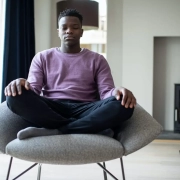How not to wait until you reach rock bottom to ask for help
In the serene surroundings of Byron Shire, where the natural beauty stands in stark contrast to inner turmoil, Anne Evans Counselling offers a guiding light before one hits the depths of personal despair. The notion of ‘rock bottom’ has often been romanticised as a dramatic turning point for seeking help, but the truth is, you don’t have to wait for a crisis to validate your need for support. Here’s an exploration of proactive well-being and how to seek help long before the ground gives way.
The Myth of Rock Bottom
The idea of hitting rock bottom implies that one must reach a point of utmost desperation to have a legitimate reason to seek counselling or support. However, waiting for a significant emotional breakdown or life-altering event to occur before asking for help is not only unnecessary but can also be detrimental to your overall health and recovery. Early intervention is key in mitigating the long-term impacts of psychological distress.
Recognising the Warning Signs
Early signs that suggest you might need support can be subtle. They are the whispers before the storm – changes in mood, disturbances in sleep, fluctuations in weight, or a dwindling interest in activities once enjoyed. You might notice an increase in irritability, a sense of detachment, or a feeling of being overwhelmed by the stresses of daily life.
Why People Wait
Many individuals delay seeking help due to stigma, fear of judgment, or the belief that their problems aren’t ‘serious enough’ to warrant professional attention. Some may view asking for help as a sign of weakness, while others might be hopeful that the issues will resolve on their own.
Changing the Narrative
Changing the narrative around mental health and support-seeking is crucial. It’s about recognising that counselling is not just for moments of crisis but is also a powerful tool for personal development and preventive care.
The Proactive Approach to Mental Wellness
Tune Into Your Needs
Self-awareness is the cornerstone of mental wellness. Regular check-ins with yourself about your emotional and mental state can alert you to potential issues before they escalate. Are you feeling more stressed than usual? Is there a persistent sense of sadness or anxiety? Acknowledging these feelings is the first step toward taking action.
Educate Yourself
Understanding the broad spectrum of mental health can demystify the process of seeking help. Mental health concerns don’t always manifest in extreme ways; they often exist in the day-to-day struggles or feelings that we might be tempted to dismiss.
Build a Support System
Cultivate a network of support among friends, family, or community groups. These connections can offer a safety net, providing encouragement to seek professional help when you’re feeling vulnerable.
Embrace Vulnerability
Allowing yourself to be vulnerable and to acknowledge that you might need assistance is a sign of strength. It’s an empowering choice to take charge of your well-being.
Normalize Routine Counselling
Just as you might visit a doctor for a regular physical check-up, consider routine mental health check-ups. Regular counselling sessions can provide a space for reflection and proactive coping strategies.
The Role of Counselling Before the Crisis
Preventive Counselling
Counselling can be a preventive measure. Engaging in therapy when you first notice signs of emotional distress can prevent more serious issues from developing.
Skill Building
Counselling provides a set of tools for managing stress, anxiety, and other emotions. These skills are best learned and practiced before they’re needed in a crisis.
Personal Growth
Counselling is not only about healing; it’s also about personal growth and self-discovery. It can enhance self-esteem, improve communication skills, and lead to a more fulfilling life.
Navigating Life Transitions
Life transitions, even positive ones like starting a new job or moving to a new place, can be stressful. Counselling can help navigate these changes smoothly.
At Anne Evans Counselling in Byron Shire, the message is clear: Don’t wait for rock bottom. Mental health is a continuum, and help is warranted at any point along that spectrum. Seeking support early on is a wise and proactive approach to well-being. It’s about enriching your life, not just repairing it. In the lush landscapes of Byron Shire, let counselling be the gentle stream that guides you to tranquillity, not the floodwaters that come after the storm.











